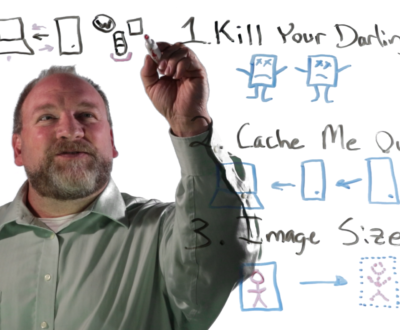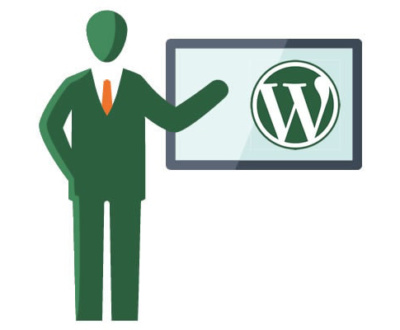OK, I will cop to creating an overly-provocative title for this post, as this topic gets me highly irritated. How’s this: statistics indicate that your web host is terrible. Is that better? No? Let me explain.
Web hosting, as a topic, is treated as an after-thought by much of the developer/designer community. Here at Colorado Web design, we avoid that to make sure your website runs quickly and smoothly through our web hosting services. On the one hand we have designers and coders, building marvelous websites and applications for their customers, and on the other we have that “IT stuff” no pure designer/developer wants to bother with. The IT stuff is mostly related to server hardware and the network on which it runs.
For the beginner web designers and aspiring web hosts out there, let’s make sure we understand some of the most important dynamics at play when you are hosting a web site or web application.
Web Hosting Basics
If this is old news to you, then please bear with me. I’ve met too many designers – years into their careers – that still only have a vague concept of how the web works, or where their hard work ends up being displayed to the world.
The Internet is actually just a bunch of computers, all connected. There is a subset of computers managing the backbone stuff like how “www.website.com” finds the IP address of your actual physical web server or cloud resources, but the majority of the internet is made up of computers serving the websites and web applications we all visit and use.
Quality Matters
Just like the difference between your grandmother’s 12 year old computer still running Windows Me <gulp> and your nephew’s monster PC gaming rig, the servers making up the web vary greatly in terms of performance and capabilities. This is also why you see offers for free web hosting, or $5 web hosting, but when you dig a little deeper for real performance hosting, you end up seeing $300, $500, $1000/month; really the sky is the limit. What your website will need in terms of bandwidth should help you determine the type of hardware you want to consider when you are ready to host your website online.
If you have a simple, informational blog with a few images, your bandwidth (and hence hardware needs) will be distinctly different from someone wanting to become the next YouTube. These days most hosting packages include a starter package that assumes very small bandwidth (a safe bet for many startups), and you will often be hosted on older hardware, that does not necessarily include the latest technology and security. But just for the sake of argument, let’s say your web host’s hardware is beefy and fast with recent software and hardware updates. What else is there to worry about?
Performance Bottlenecks

The database, and particularly how it is used and maintained, can have a huge impact on the performance of the website and on the end user’s experience with your content. A classic recent example we encountered was a site running on a shared server package (one PC running myriad, unrelated websites), and the client wanted to add eCommerce capabilities. This was simple enough to deploy in a WordPress environment, and we were happy to oblige. We did warn them that if they had much site traffic, they would quickly outgrow their web host, and the capabilities they had with them. Unfortunately, we didn’t get that far, as the client came up with an eCommerce store that included almost 100,000 distinct products. Now a decent piece of hardware will serve this number of records without much issue, but in this case it was the nature of the coding, and the way it was using the database that became a problem. The eCommerce platform the customer had acquired was not using the most efficient means to access the data, and often did loops through the entire record set for a few mundane tasks. This never caused an issue with a 40-product store, but with tens of thousands of products to churn through, the site was hitting major performance issues with minimal site usage.
Another example of code-created bottlenecks are in the ways images can be used online. From the basic mistakes of not re-sizing images for web consumption, to more technical problems with reuse, use of caching, or failure to use Content Delivery Networks (CDNs) to speed up delivery of image-heavy pages, many performance issues related to images are relatively easy to avoid or even eliminate with a few moments of planning, and at worst, additional investment in CDN resources.
Website Backups
A wise old sage once told me: “There are two kinds of people in this world. Those who have lost data, and those who will.”
That nugget applies just as much to web designers and application developers. Many of us keep a copy of the “Go Live” site for a backup, where everything worked great, so we took a snapshot to where we could always retreat, if necessary. But the modern web dictates that most websites have fresh content via page updates, blogs, and social media connections; not to mention ever changing records of customers and orders in eCommerce shops. Some web hosting packages include periodic backups, including regular, scheduled backups for a price,
We must also consider storage capacity (especially for image or video-heavy sites), security in storing the backups long-term, and ease of data recovery in the event of an emergency. In many of these factors, most modern web hosts either fail outright, or include pricey add-ons to get to the minimum level of coverage needed to protect your site.
Several startling anecdotes from clients and from our own experiences with web hosts suggest that recovering from a disaster is not a priority for the hosts themselves. Often clients tell us how they ended up at a DOS style command prompt trying to load hard drive volumes to get to their “backup”. Yes, they had a backup, but then they lost days of productivity trying to recover the site to it’s working state from that backup.
The good news here is that more and more hosts (including us! </shameless plug>) are building a robust backup system, as well as a decent recovery process that doesn’t leave non-technical designers and customers in the lurch.
Web Server Security
Most of us are savvy to needing anti-virus protection on our PC’s, but a surprising hole exists in the web server world, with a huge number of dedicated server hosting packages leaving all the security to the person renting the box. This has it’s own advantages and disadvantages, but if you aren’t trying to do your own IT, dedicated servers can be extremely vulnerable, and even some shared packages don’t do a good job protecting one user’s files and folders from the activities of another. This can be especially acute with websites allowing users to upload their own files. People with malicious intentions often seek out certain types of exploits like these.
Unfortunately, in some places on the globe, failed state lawlessness, and modern technology have created a powerful sort of criminal mischief potential. Over the last 3 years, we’ve seen an ever growing amount of malicious website traffic; bots and scripts being run to test web servers for vulnerabilities, attempt to crack into the administrative areas of CMS-driven websites like WordPress or Joomla, or in some cases just simply bombard a site to artificially inflate site traffic to a point that exceeds the web server’s ability to function. Here again, we see a convergence between performance and security, where good security actually enhances performance, both directly and indirectly.
Numerous web hosts are just now getting their hardware networks where they need to be, and fewer have malicious traffic monitoring as a basic feature.
If you are in the market for web hosting, ask your potential host these critical questions:
-
What type of security considerations have been taken?
-
How many other websites may be present on the hardware you are renting?
-
Precisely what recourse do you have if your site crashes and you need a backup restored quickly?
-
Does anyone monitor traffic on the web server for malicious attacks?
-
Finally, are there hidden costs to get some or all of the above services included with the web hosting package you are considering?
Hopefully, this has shed a bit of light on the daunting task of picking the right web host, and the types of things you should expect from any legitimate host.
Bill lives and plays in Fort Collins, Colorado. After a fulfilling career for a Fortune 50 company, Bill founded Colorado Web Design in 2012 with a passion for creative digital solutions for business. Bill likes to manage a wide variety of projects and tasks for his clients in the digital space. The creative elements of website design, application design, and marketing are enough to keep anyone busy and engaged, but wiping the slate clean over and over at the start of new projects comes with its own challenges. "I like to start with really good client communication sessions. The rest is easy if you get started in the right way." He plays tennis, bikes, and hikes and then undoes all of that with too much delicious food and TV watching.
About Colorado Web Design
We've been building websites for Colorado businesses since 2002. We are a small team of dedicated individuals who love the challenge of each new marketing project. We live and play in northern Colorado.












